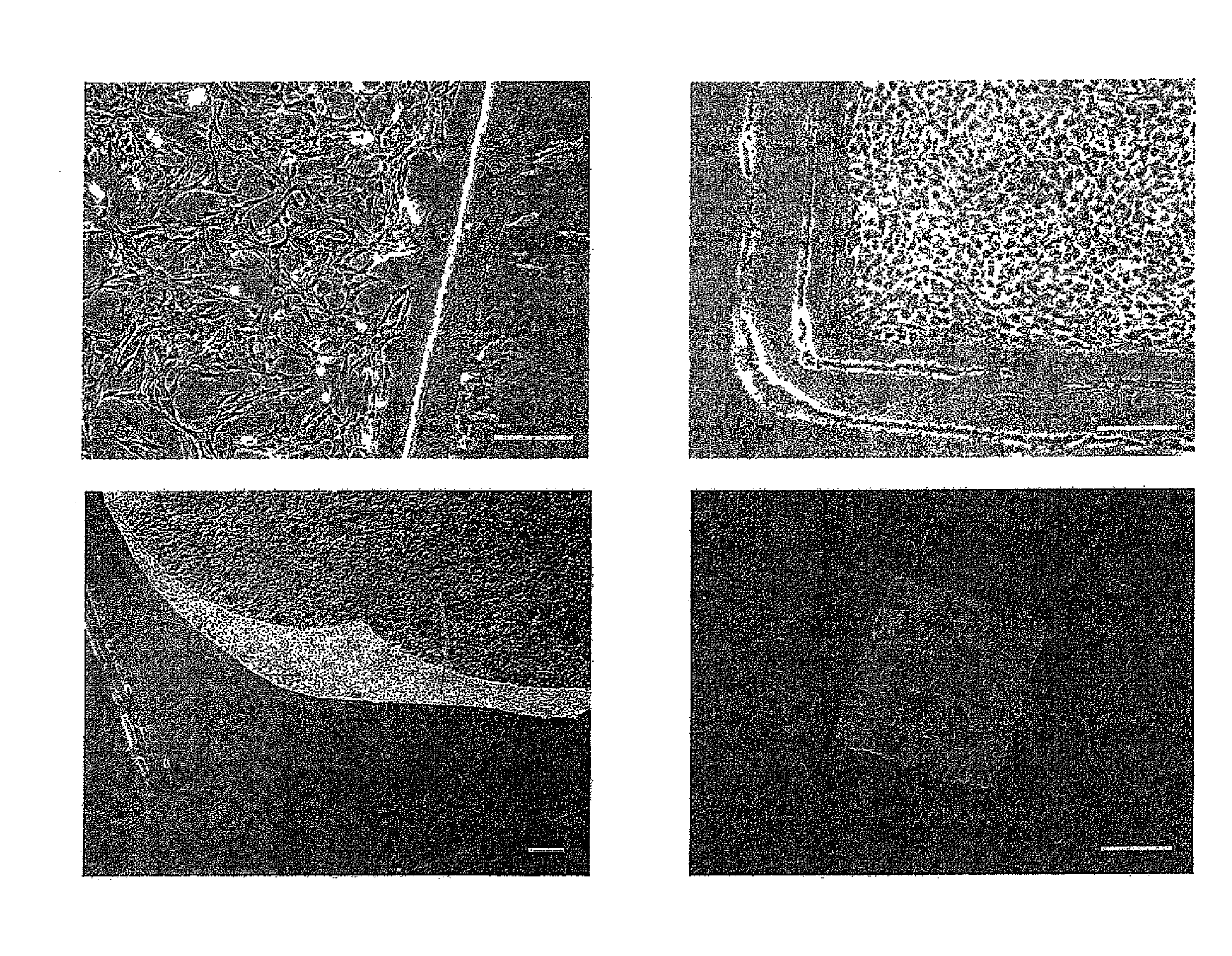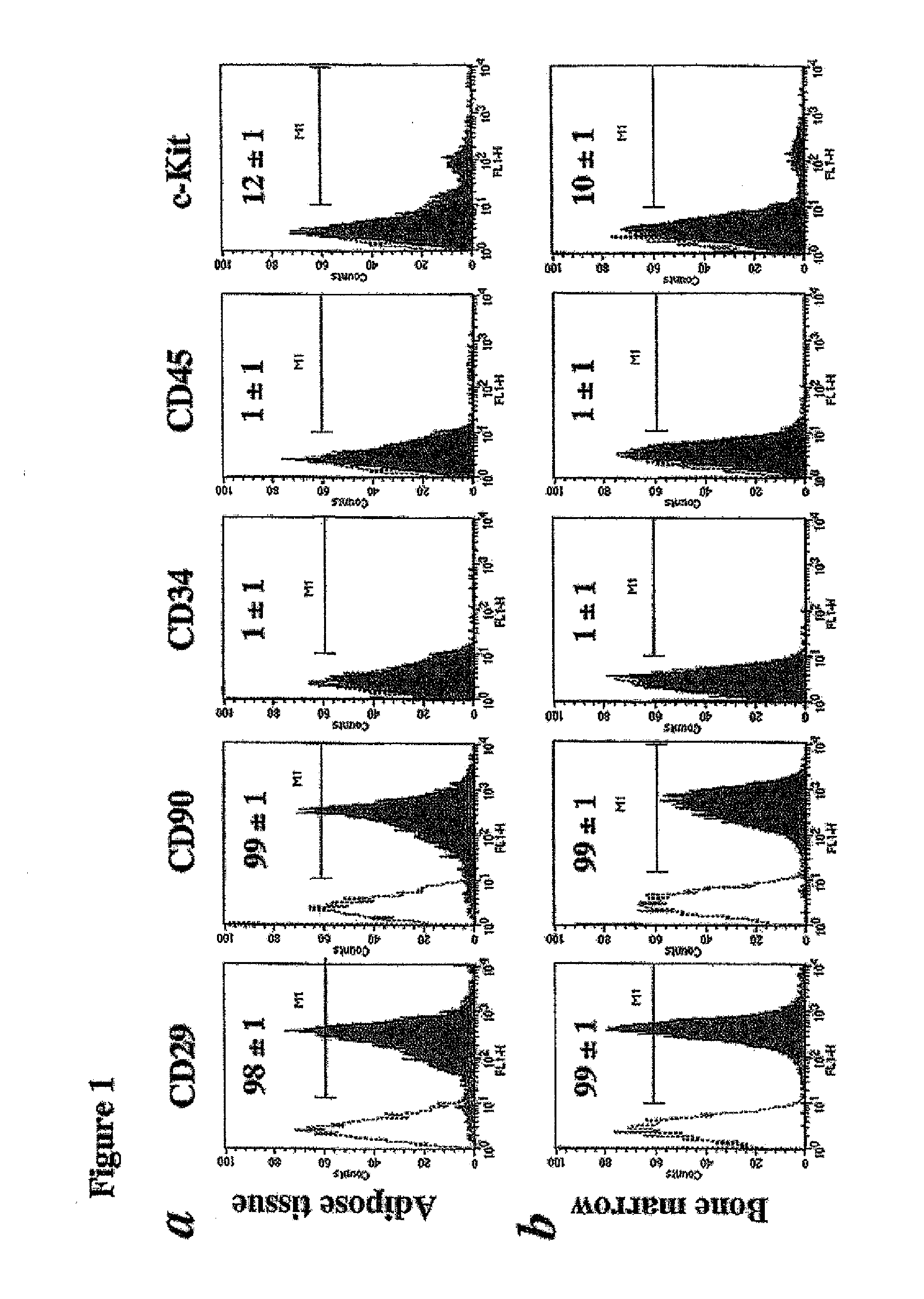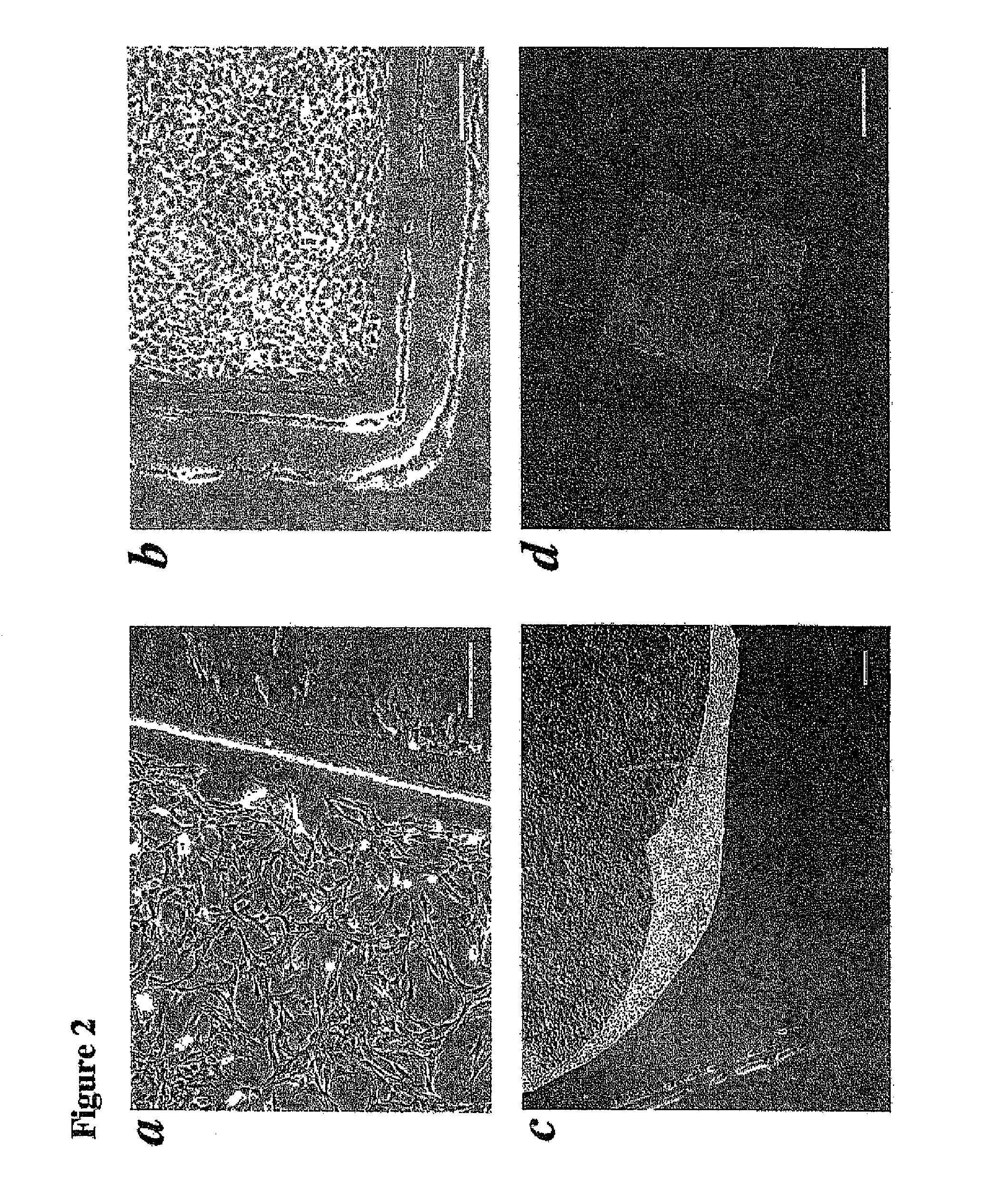Cell Sheet Containing Mesenchymal Stem Cells
a cell sheet and stem cell technology, applied in the field of cardiovascular diseases and cell sheets, can solve the problems of inability to construct multi-layered tissue, inability to regenerate thick myocardial tissue using this method, and inability to achieve the effect of reducing the risk of cardiac muscle and neovascularization
- Summary
- Abstract
- Description
- Claims
- Application Information
AI Technical Summary
Benefits of technology
Problems solved by technology
Method used
Image
Examples
examples
Methods
Heart Failure Model
[0026]All protocols were performed in accordance with the guidelines of The Animal Care Ethics Committee of the National Cardiovascular Research Institute. Rats weighing 185 to220 g were used. The myocardial infarction model was prepared by ligature of the left coronary artery. After the rat was anesthetized with pentobarbital sodium (30 mg / kg), an incision was made in the left thorax and the heart was exposed under artificial respiration. Next, a site between the pulmonary artery conus and the left atrium, i.e., a site 2 to 3 mm from the origin of the left coronary artery, was ligated by a 6-0 proline suture. In the sham control group, thoracotomy and exposure of the heart were performed in the same manner but without coronary artery ligature. After surgery, the rats were raised under standard feeding and environmental conditions.
Experimental Protocols
[0027]Three groups were used: heart failure rats that underwent mesenchymal stem cell sheet transplantatio...
PUM
 Login to View More
Login to View More Abstract
Description
Claims
Application Information
 Login to View More
Login to View More - R&D
- Intellectual Property
- Life Sciences
- Materials
- Tech Scout
- Unparalleled Data Quality
- Higher Quality Content
- 60% Fewer Hallucinations
Browse by: Latest US Patents, China's latest patents, Technical Efficacy Thesaurus, Application Domain, Technology Topic, Popular Technical Reports.
© 2025 PatSnap. All rights reserved.Legal|Privacy policy|Modern Slavery Act Transparency Statement|Sitemap|About US| Contact US: help@patsnap.com



